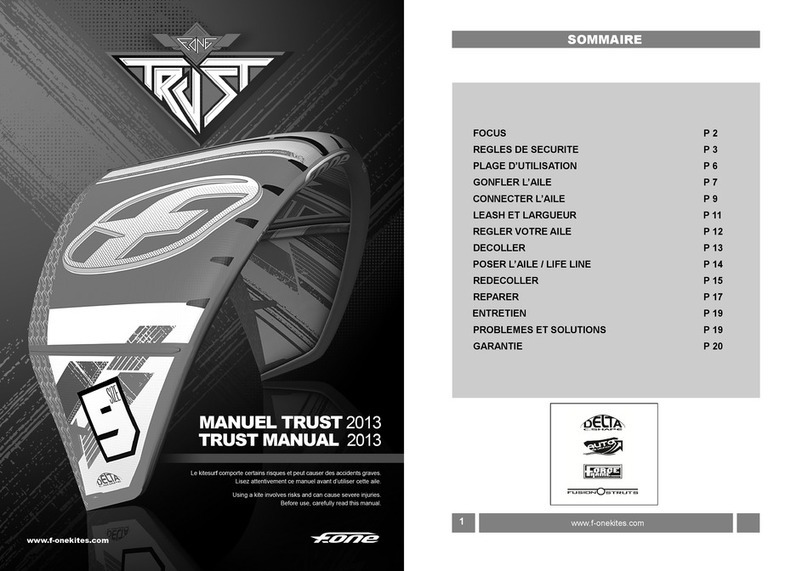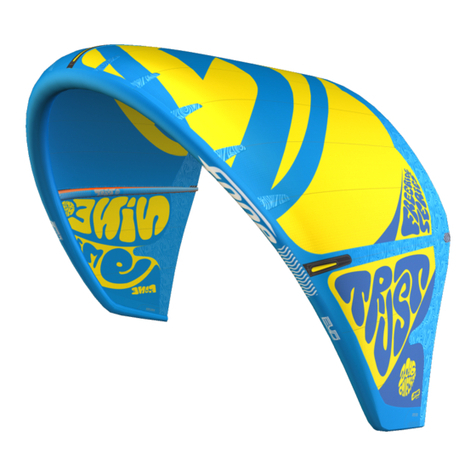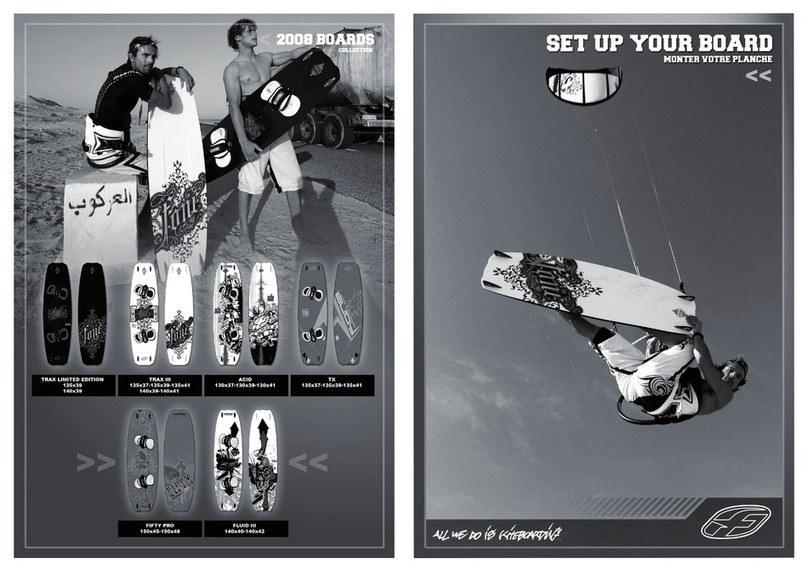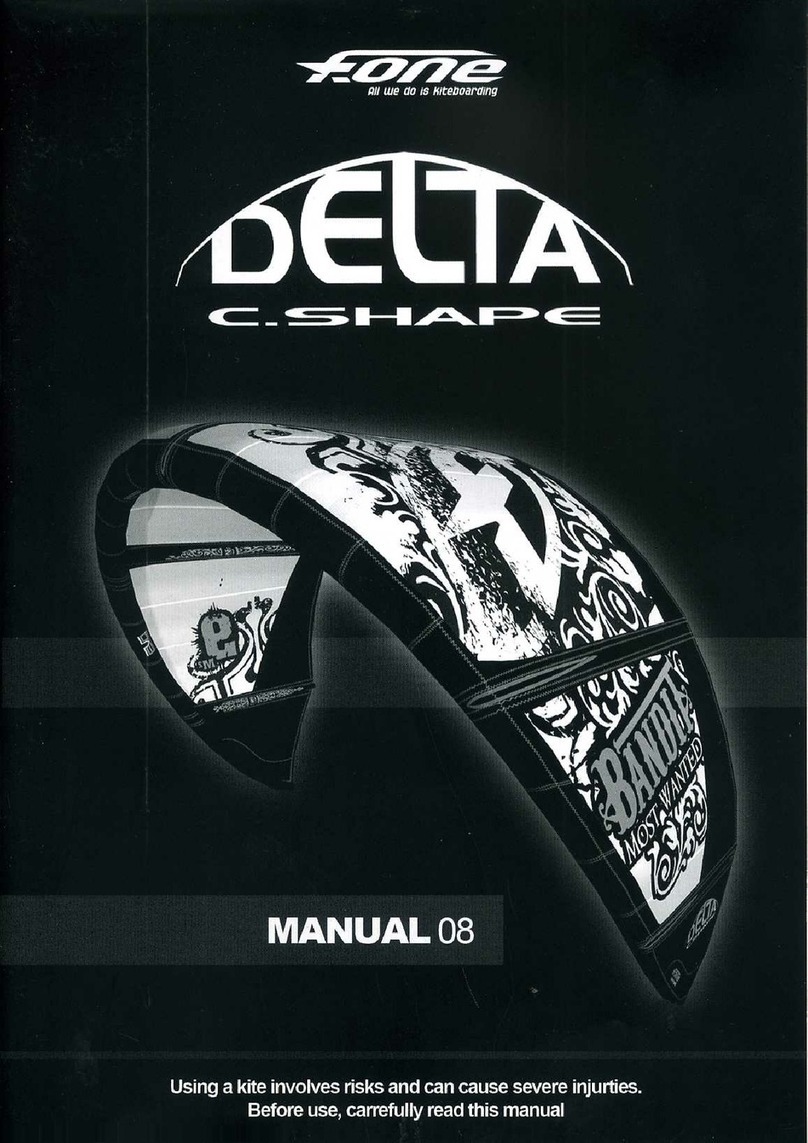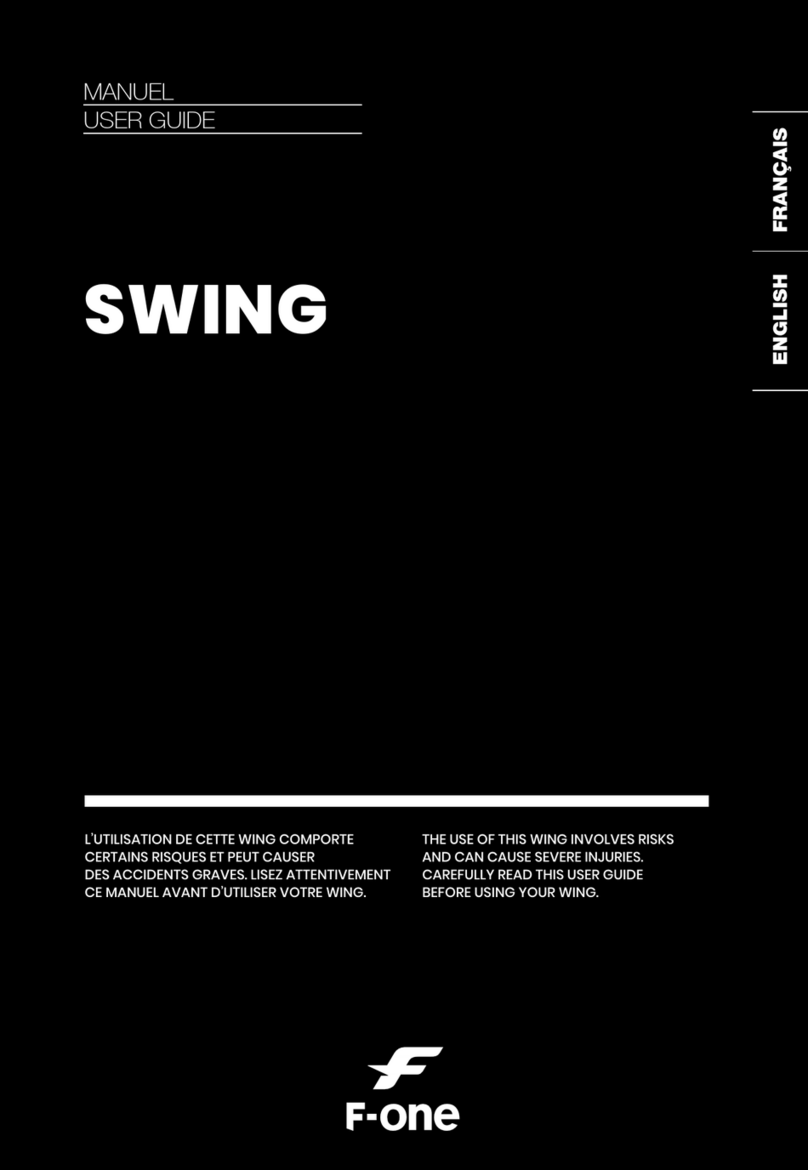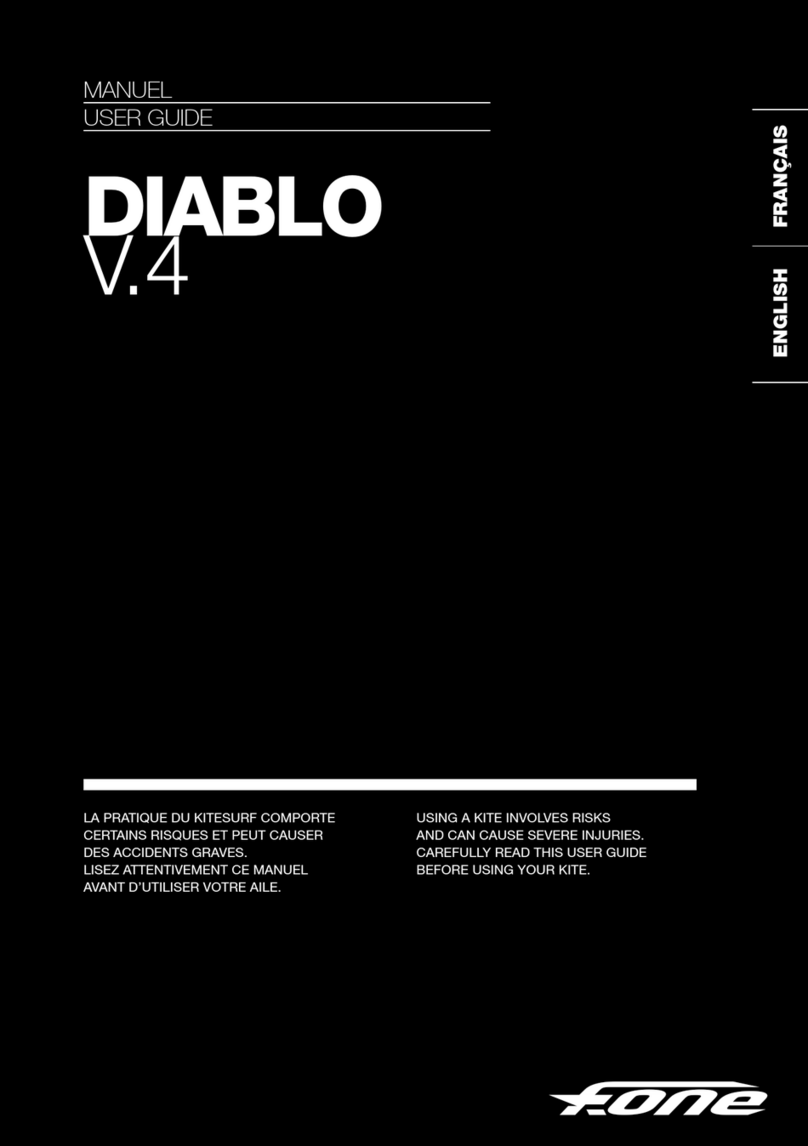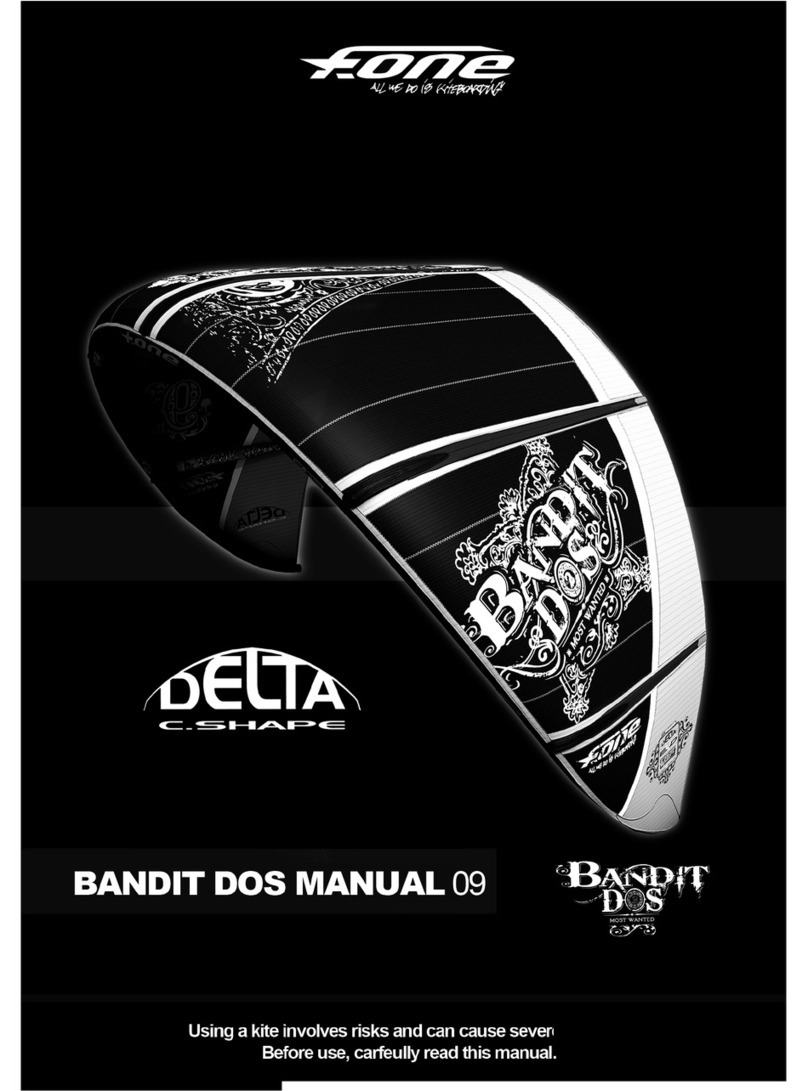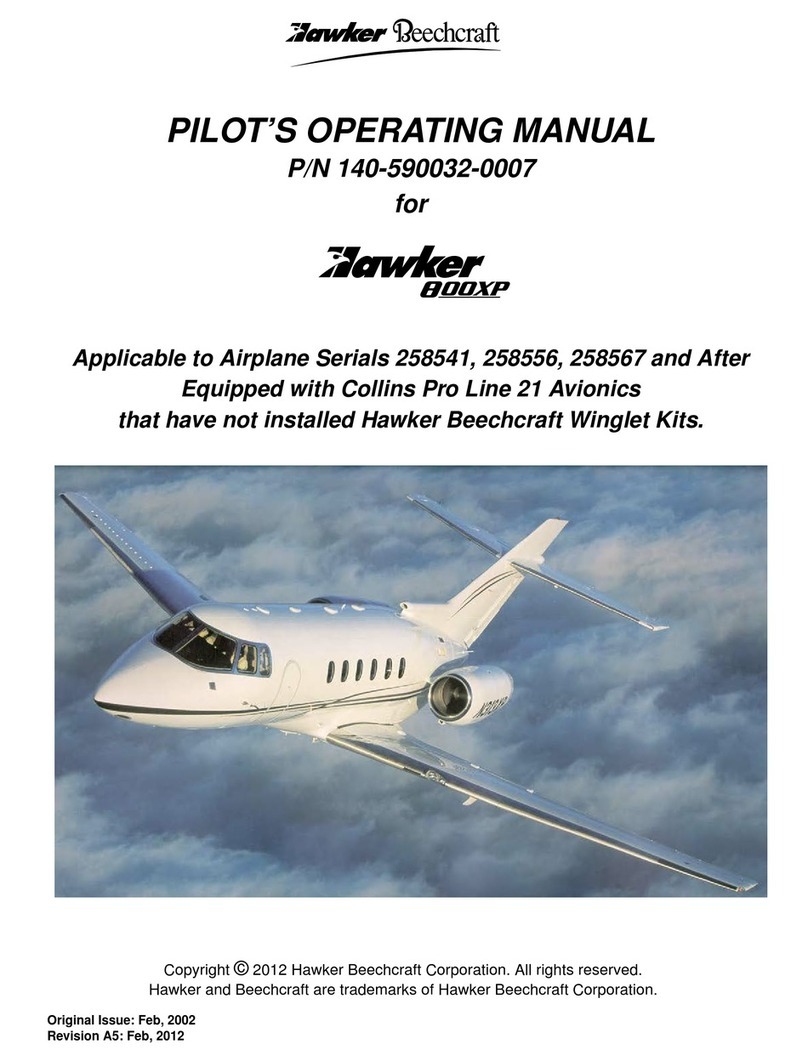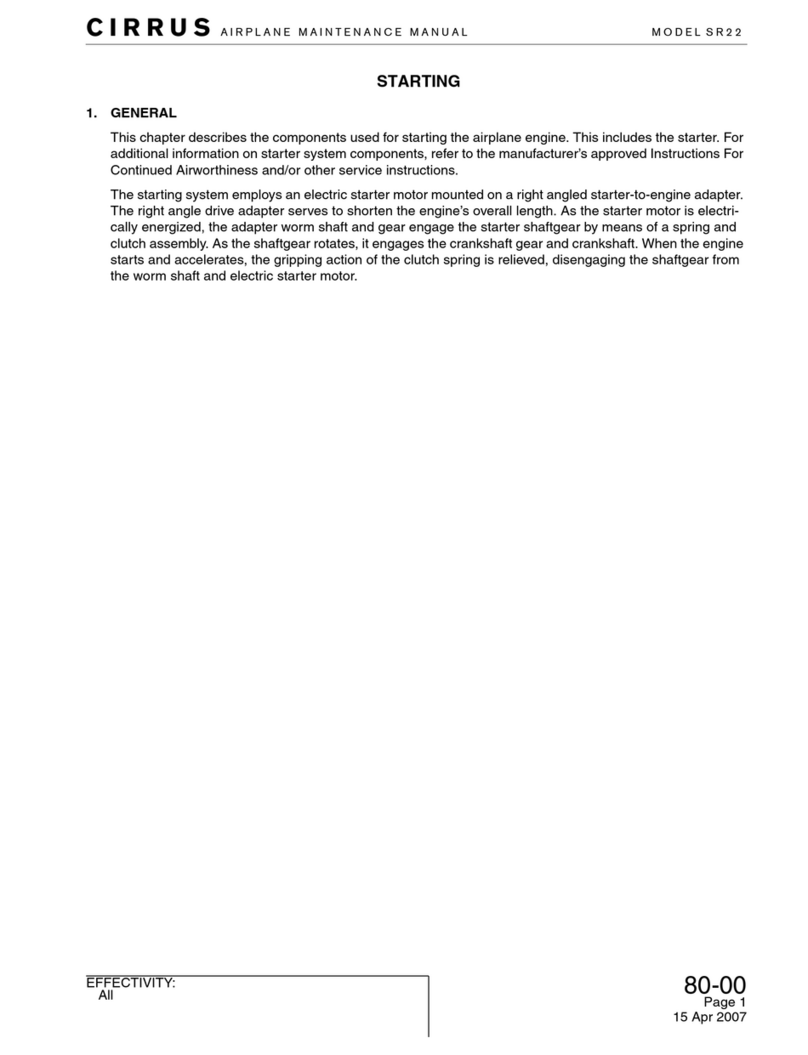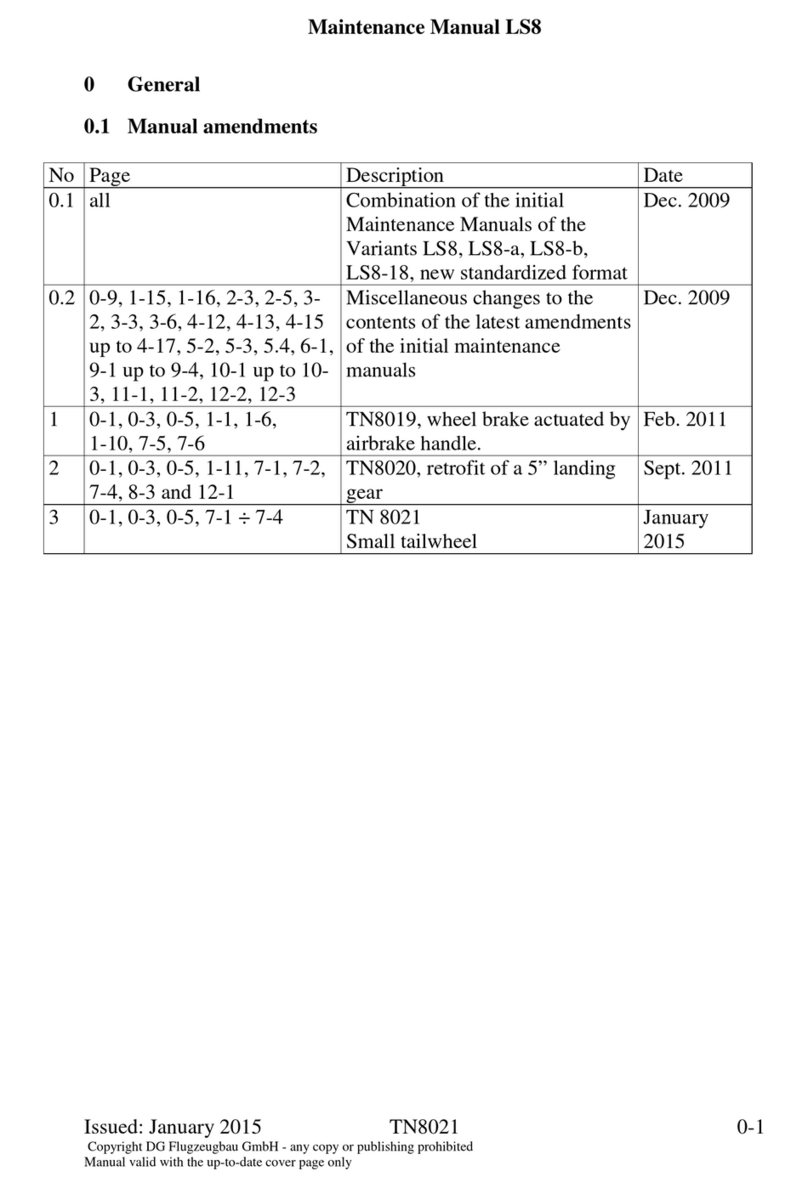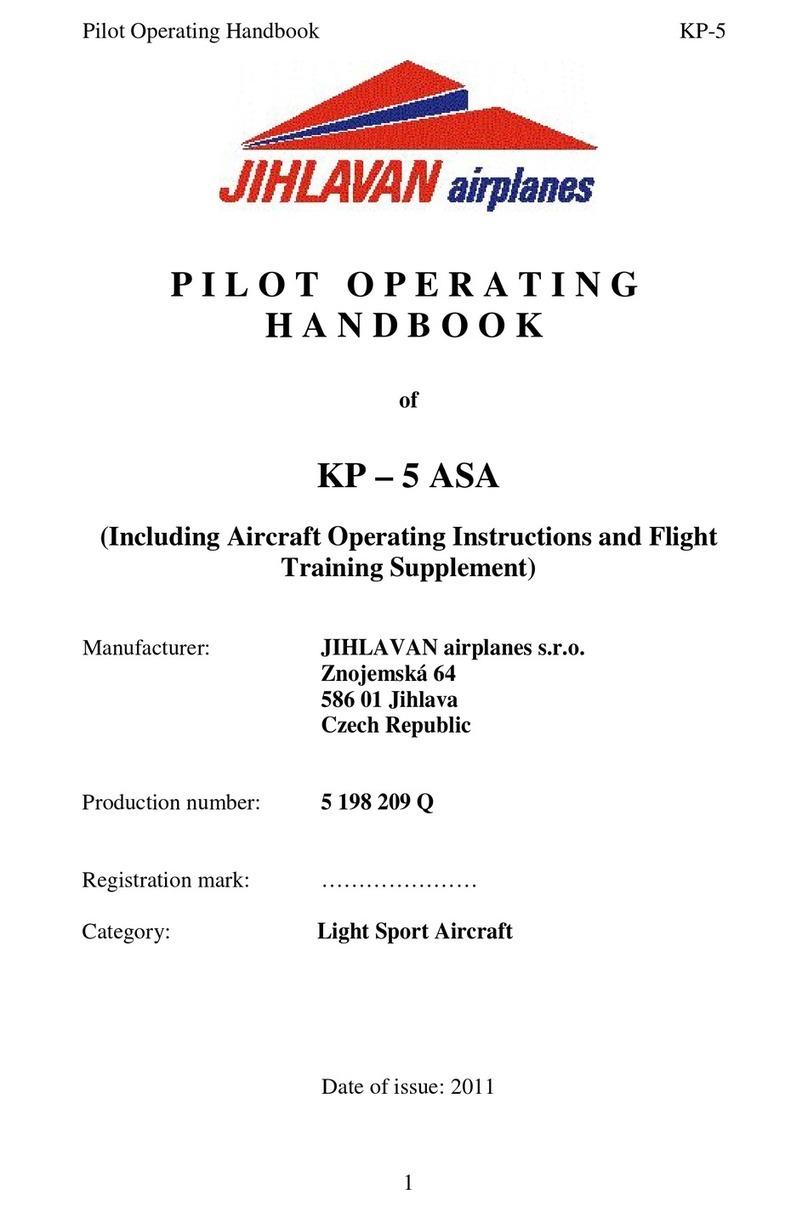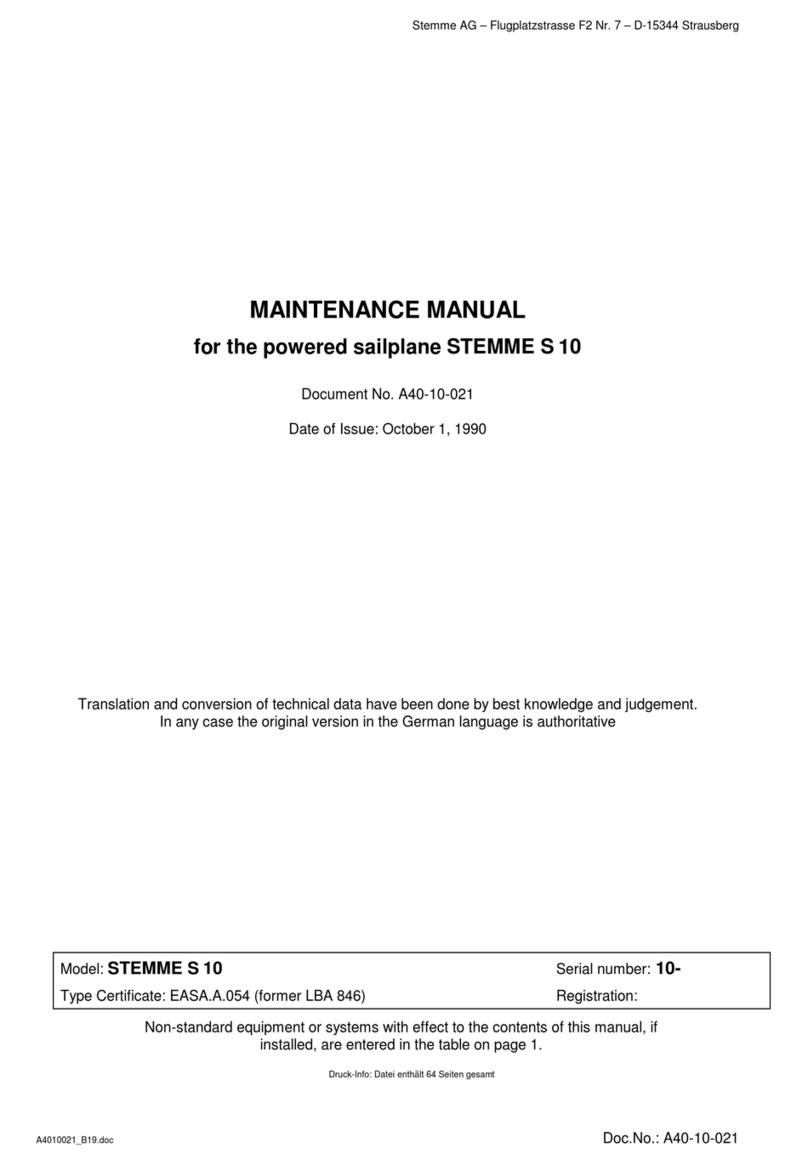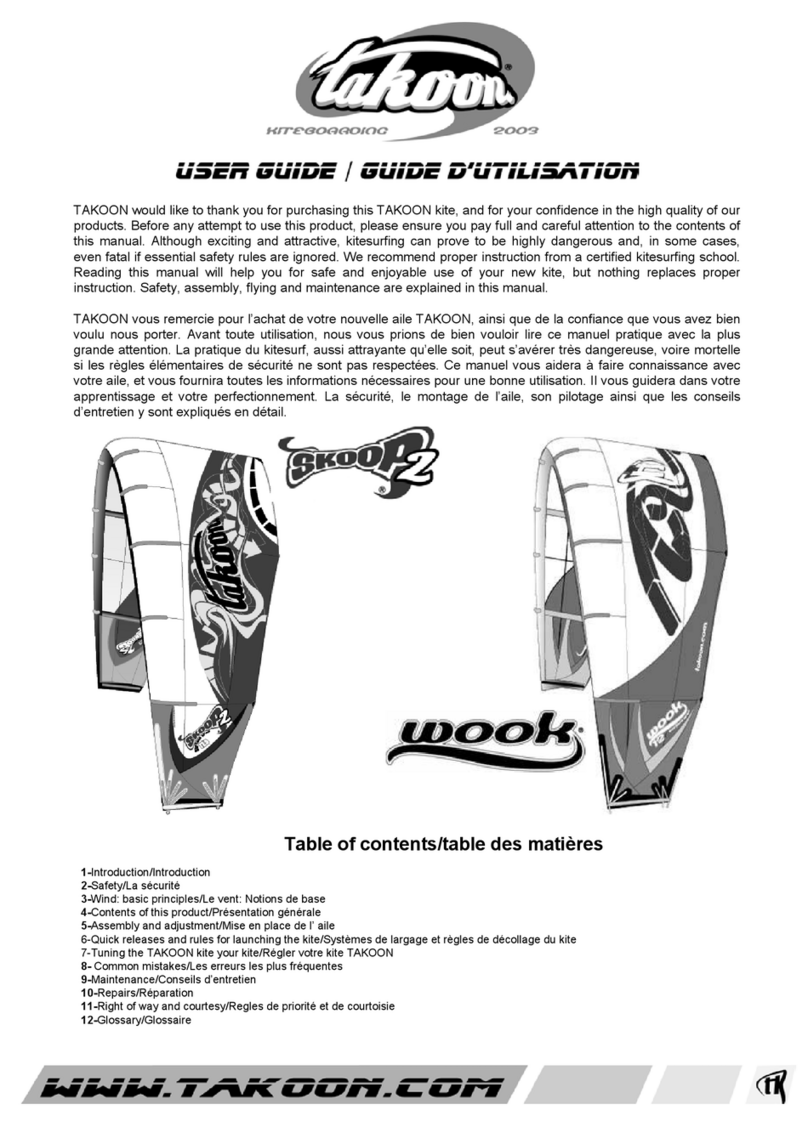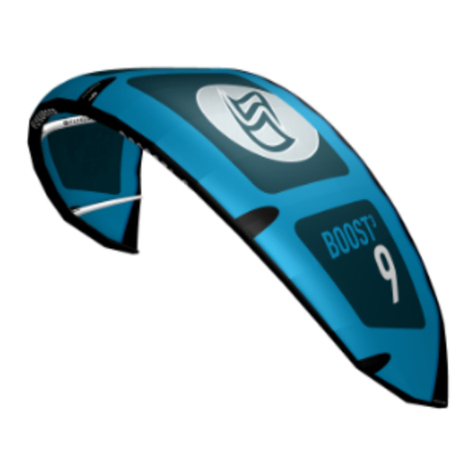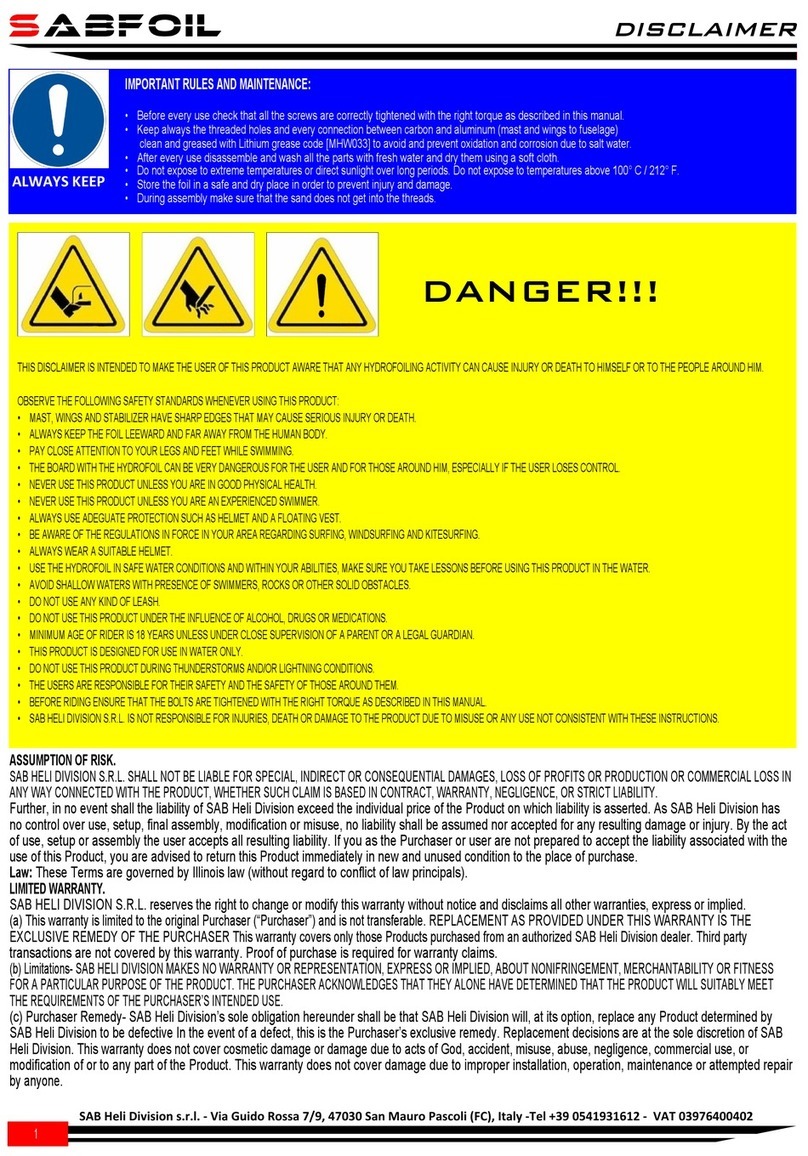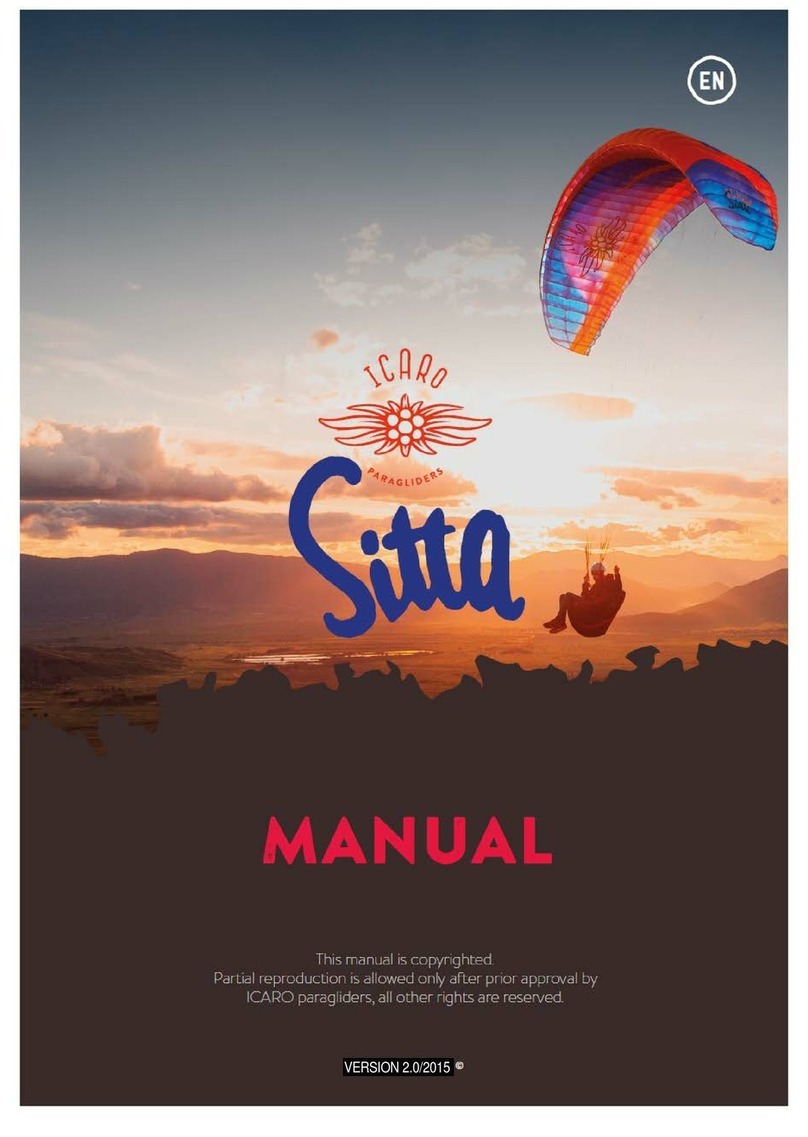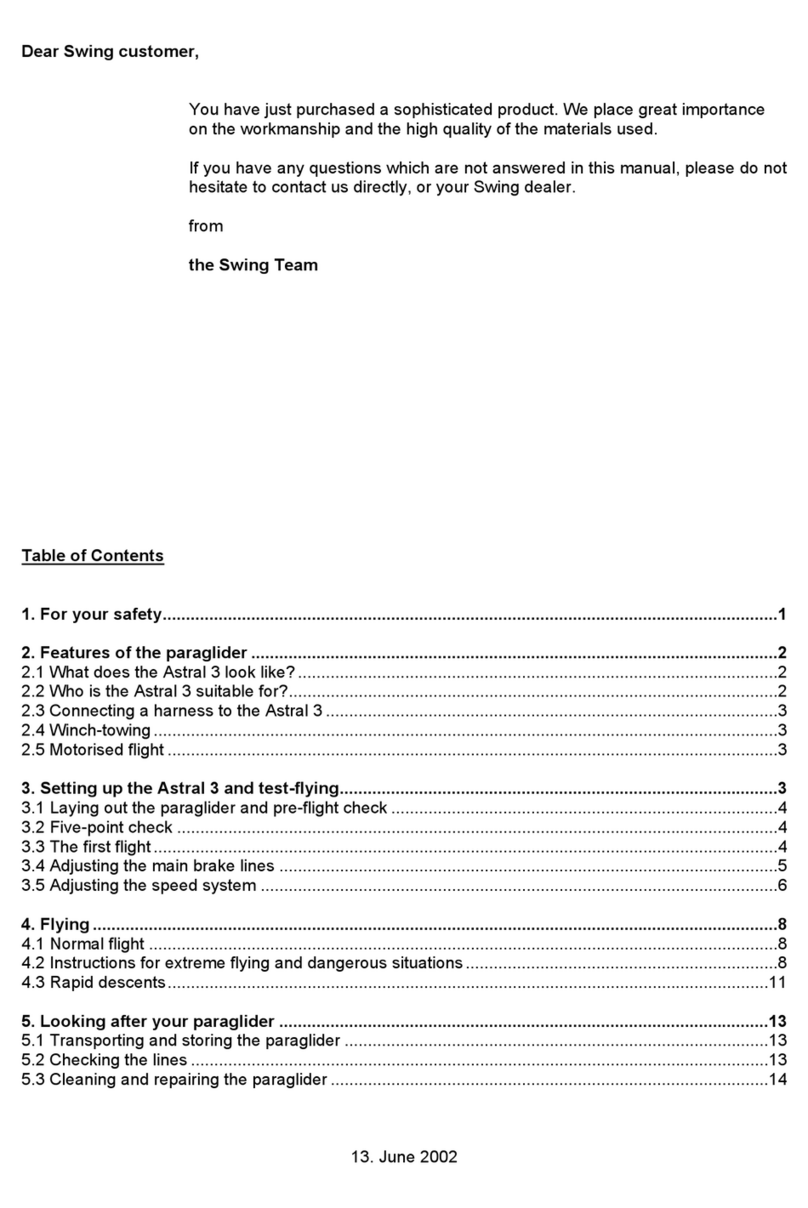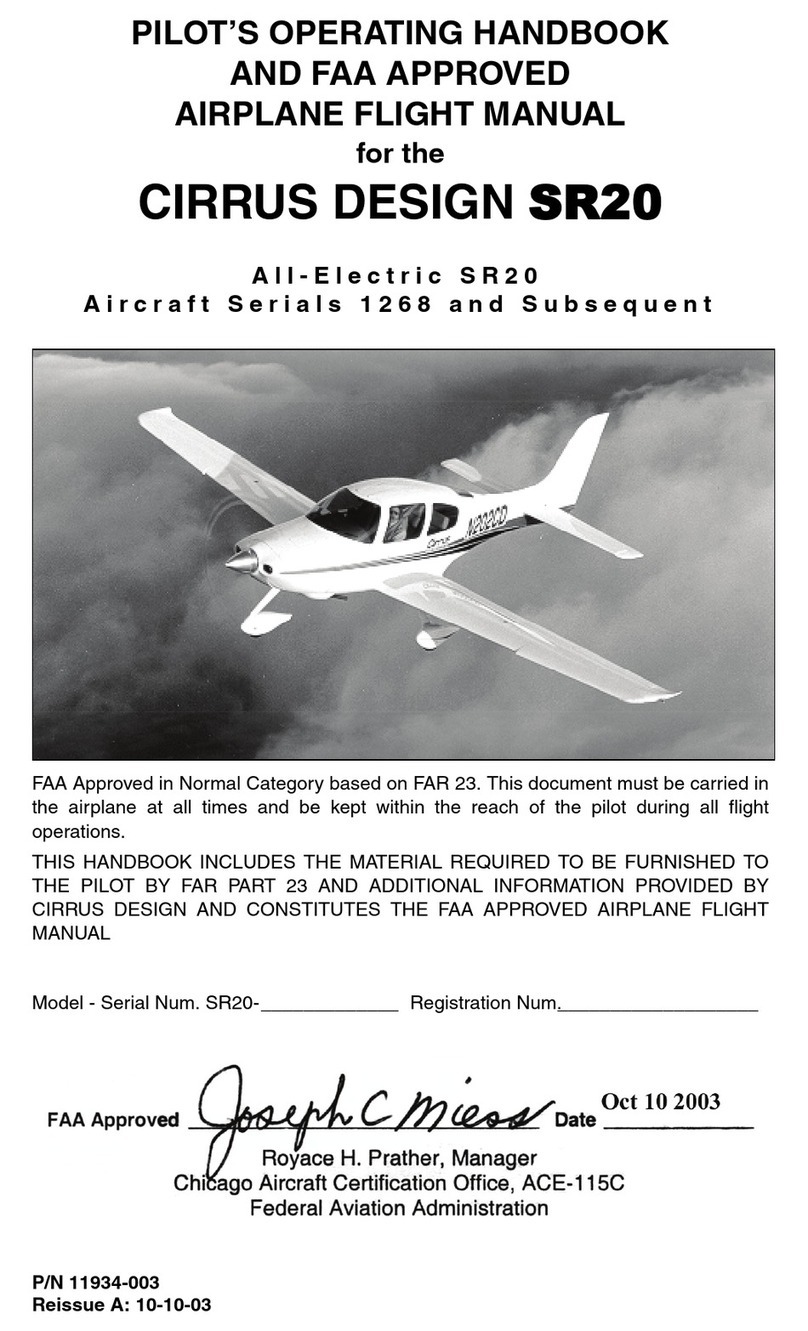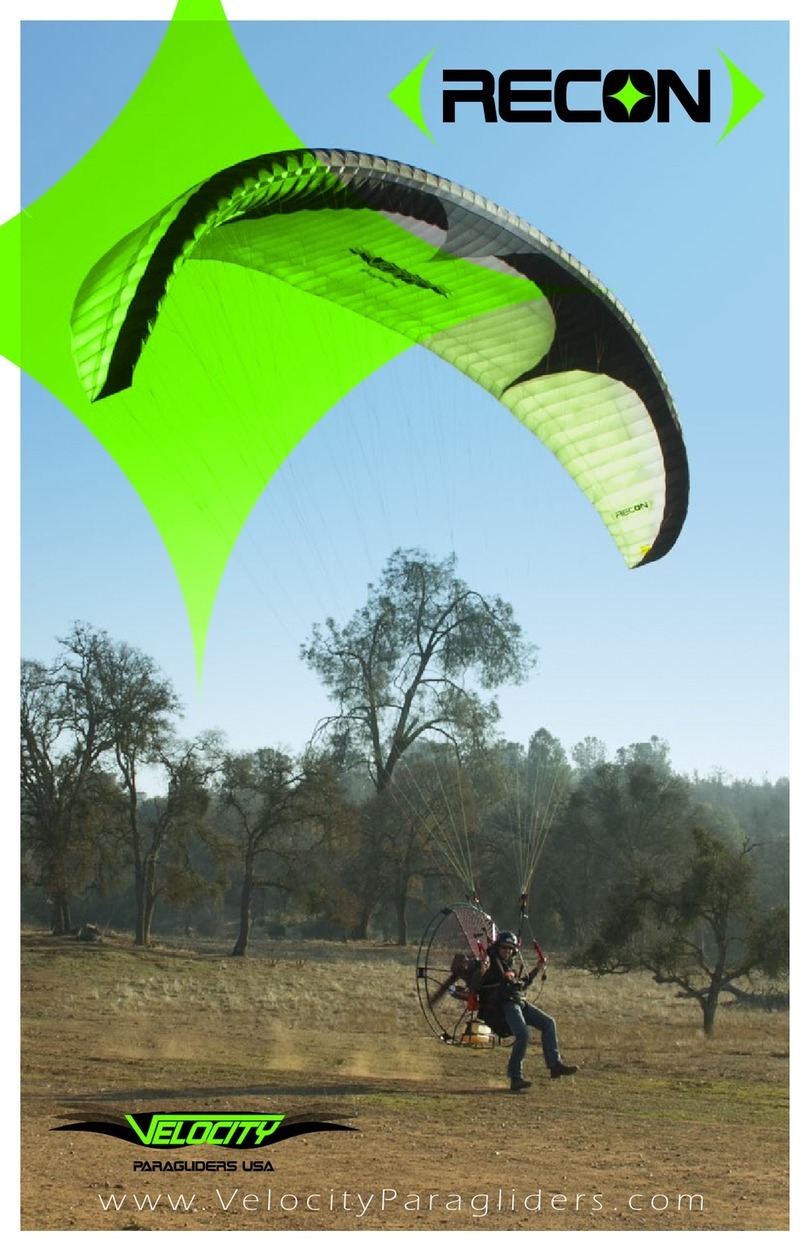Fone M5 User manual

www.f-onekites.com

www.f-onekites.com
FOCUS P 2
SAFETY P 3
WIND RANGE P 6
SETTING UP YOUR KITE P 7
LAUNCHING P 8
TUNING UP YOUR KITE P 9/10
USING THE UPS P 11
TUNING UP THE ACTIVE5 P 12/13
RIDING WITH THE ACTIVE5 P14
RELEASING YOUR ACTIVE5 P 15
RECONNECTING YOUR ACTIVE5 P 16
RELAUNCHING P 17
REPAIRING P 18
GLOSSARY P 19
KITE CARE P 20
PROBLEMS and SOLUTIONS P 20
WARRANTY P 21
SUMMARY
11

www.f-onekites.com
FOCUS
Your kite
1. Leading edge
2. Struts
3. Wingtips
4. Trailing edge
5. Front lines connectors
6. Back lines connectors
7. 5th line bridle
Your Bar
1. Mini harness line
2. Releasable chicken loop available in two
sizes
3. Back leader lines
4. Front leader lines
5. Front lines adjustment knots
6. Back lines adjustment strap
7. Power adjustment strap
8. T-one: enables, the 5th line power man-
agement and undoing of the center lines
twists
9. Push System, safety system that release
the power of the kite by pushing the bar
10. Pull System, safety system that release
the power of the kite by pulling on the
ball.
11. 5th line
Accessories
1Pump high output
2Extensible kite bag
3Patch repair kit for bladders
22
66
44
66
22
11
33
44
11
22
55
33
55
Here is a glossary of your equipment for you to get acquainted with most
technical terms used in this manual.
77
11
99
33
22
88
1111
77
1010

www.f-onekites.com
Before use, carefully read this manual;
Using a kite involves risks and can cause severe injuries. That is why it is
strongly advised to follow a proper training in an accredited school before your first
use. To locate the school nearest you please log on to www.f-onekites.com in the
school / dealers area of the site.
Here are some safety tips to know and to follow:
The equipment, (helmet, life vest, etc…) contributes to your safety, yet caution remains the
best safety device of them all. Keep in mind that no one controls the kite at 100%. Learn, to look
around, to pin point the struggling kitesurfers, and to choose asafe spot.
Rule n°1: Your safety
•Do not ever tight yourself to the kite in a permanent manner without an emergency quick re-
lease device, you should always be in a position to let go of the kite rapidly in a case of an
emergency (tangled lines, wind to strong, injury…). To achieve that, regularly check your
material, insure the quick release is not worn out, regularly rinse your material. But keep in
mind that every quick release safety system should work in combination with a leash, which
allows you to keep your kite attached to you. This leash should also be releasable in case of
an emergency. Every F-one bar is equipped with the ACTIVE5 system security which allows
you to cancel the power of your kite and also a quick release.
•Do not try to grab a kite by its lines. Under tension they can be as lethal as a razor blade.
•This kite is not a flying device (paraglide) or floatation devise and should not be used as
such.
•Do not go sailing alone.
Rule n°2: Get set up
The helmet
It is strongly recommended to protect you against your board in case of a fall, and in other
unexpected conditions such as hard landing and bad take off.
The wetsuit
Choose a full-length wetsuit or a shorty according to the water temperature. Please note that
if you are cold, you’ll use more of your energy.
The life vest
The life vest can help you during your waterstarts and while re-launching the kite. You will be
glad to wear it during your first jumps to cushion some hard landings. It also will be a good
companion if you get stranded and have to swim back to shore.
The harness
The harness should be comfortable and of strong manufacture. It is the link between you and
your kite. Seat harness or waist harness, can both be used. Seat harnesses are more appropriate
for beginners. Beginners tend to spend more time with the kite at the zenith (directly above the
head) and in that position the seat harness does not move upward as much as the waist harness.
Some accessories to accompany your harness: a back handle to keep you from flying out of control
in case of gusty winds, a line cutter, a double loop to tie down your leash, kite or board.
SAFETY
33

www.f-onekites.com
WIND
UPWIND
AREA
DOWNWIND
AREA
OBSTACLES
FREE
AREA
SEA
LAND
SAFETY
Rule n° 3: Choose your practice spot
Choose your spot according to your level:
The choice of a good spot is a prerogative for a safe
learning. The best spot is not necessary the spot where you
find the most kites. If you just started or if you do not control
your kite properly, the best spot is the least crowded one. The
water and wind conditions also vary, advance kitesurfers often
look for strong wind and good waves where beginners should
be looking for calm waters and softer winds. When first start-
ing out it is recommended to look for a place with fairly shallow
waters.
Choose an obstacle free area:
Check that the space on your sides and under your
wind is free of obstacle: no houses, no trees, no cars or jetties.
Under no circumstances should you be riding near electrical
posts and wires, or near an airfield or even near a harbor.
Wind direction:
Never ride in strong offshore wind. The wind can die at
any moment or a line can break. In offshore wind it is harder to
swim back to shore, the wind and the current pushing away
from the beach.
It is not recommended to ride when the wind is on-shore
especially for beginners as the wind pushes directly onto the
beach. This will make your learning harder: you will not be
able to do good runs and go up wind, and you will end up on
the sand very quickly. This will also be more risky the slightest
gust could send you onto the sand and your kite may fall
violently onto the sand.
Therefore always ride while the wind is side or side-on,
you in terms will be able to go downwind while keeping a safe
position in case of an emergency.
The area down the wind:
Be cautious and check that there are no obstacles going
down wind. You should always consider room for error. Keep
in mind that the risk is to go down wind, beginner or not. You
are not free from breaking a line, losing your board, or break-
ing your harness… therefore the beach down the wind should
always be accessible. Think that you may have to walk back
alongside the beach (check that there are no rocks, cliffs,
fences, or jetties blocking your way).
If you are just starting out or if you cannot entirely con-
trol your kite, be careful as to where you stand on the spot: if
the spot is big enough, it is better to stand upwind from other
kites to avoid crossing your lines with theirs. It is less tricky for
you and them, this will allow you to concentrate on your flying
and less on others.
44
OKOK
NO
NO
ON-SHORE
OF F-SHORE
SIDE-SHORE
po rtsideSIDE-SHORE
starbo ard
SEA
LAND
Beginner area:
Calm water
Side-shore wind
No obstacles
Less kites
OK OK
NO NO

www.f-onekites.com
Rule n°4: Check the weather conditions
Check with the local weather forecast, (radio, web, harbor crew).
How strong are the winds and from which direction? You must know how the speed of the
wind and the direction are going to evolve during the day.
You should not ride during stormy weather, the kite may attract lightning!
Also check on the tides schedules and the areas for rip currents.
Rule n°5: Respect and help out others
Put away your material
Be careful not to unwind your lines on top of others’. The same applies when you put down
your kite, be careful not to do it on top of someone’s line. This can become hazardous if he or she
re-launches his or her kite without noticing your lines. If you leave your kite on the beach, to get
some rest or just waiting for better conditions, think of rolling up your lines on your bar to clear up
the spot.
Avoid the kite at the zenith
Avoid if possible staying with the kite at the zenith while you are still on the ground, better to
take it down in order to get some rest. This could be hazardous for you and the others: you are not
safe from a sudden lack of wind or a strong gust that could take you down. On the ground or the
beach, falls are harder and they hurt.
Your kite at the zenith can also disturb the others from landing and launching their kites.
Help out others
Always keep an eye on your surroundings, and pay attention to others. Do not hesitate to
help out others launching and landing their kites, or going after a struggling kitesurfer.
Respect the priority on the water
When two kitesurfers are passing each other, the one closer to the wind origin should raise
his kite and the kite surfer under the wind should lower his kite to avoid a tangling of the lines.
When two kitesurfers are facing each other, the kite surfer riding with the wind coming from
starboard (right hand forward) according to the path followed has the priority over the kite surfer
who’s wind comes from port side (left hand forward). The kitesurfer riding starboard should
maintain his or her trajectory and the one riding port side should move further down the wind in
order not to cross their paths.
Rule n°6: Learn to use your safety systems
Do not fly your kite without a proper safety system allowing you to instantly kill the power of
the kite and without a safety leash connecting you to the kite once you have killed the power, this
leash should also be releasable in case of an emergency. Frequently check the wear and tear of
your safety systems.
Do not wait for trouble to learn how to operate your safety systems. Chose a wide open area
to practice your release of the kite.
SAFETY
55

www.f-onekites.com
The wind range and the size of your kite are spamted on the kite and on the bag. The
wind ranges are expressed in knots and the sizes in actual square meters.
This wind range is given to you as an indication for a rider weighting 75 kilos. Wind range
varies according to each rider. It depends on:
•The rider’s level: the more you progress the more you will be able to use the kite in the upper
wind range.
•The rider’s weight: the bigger you are the more you will be able to use the kite in the upper
wind range.
•The board’s volume: the more volume your board has the more you will be able to use the
kite in the lower wind range.
When you get to the spot, measure up the wind speed. Take your time to figure out the con-
ditions, don’t make any mistake, one minute is not enough, you need to control that the wind is
steady free of gusts. Check out the other kites, their sizes, that will give you some indications on the
conditions. If you hesitate between two kite sizes always take the smaller one, you will have more
fun riding underpowered rather than overpowered.
If you cannot walk backward alone with the kite in the air, that means that you are
overpowered. Land your kite.
66
Wind Range
(knots) 678912 14 16 20
M5 XXXX12-26 10-22 8-18 6-16
DREAM 30-45 25-37 21-33 18-28 12-24 10-20 8-18 X
4U XXX15-25 10-20 8-18 XX
WIND RANGE
This table is only to
be used for
guidance. You
should also take
into account the
wind density. Watch
out also for
unstable wind.
Bft Km/h Knots Description
0 <1 <1 Calm, smoke raises vertically.
1 1-5 1-3 Light air.
2 6-11 4-6 Gentle breeze.
3 12-19 7-10 Flags extended,
good wind for beginners.
4 20-28 11-16 First white caps appear;
make your first runs.
5 29-38 17-21 Trees begin to sway,
attempt your first jumps.
6 39-49 22-27 Sand blows on the beach,
7 50-61 28-33 The white caps are all over,
reserved to advanced riders.
8 62-74 34-40 Resistance felt in walking against wind.
9 75-88 41-47 Watch the power of nature.
10+ >89 >48 Stay home!

www.f-onekites.com
Inflate your kite
Unroll your kite and position it so that one of its wing tips is located upwind from the other.
Place some sand on the upwind wing tip of the kite.
Before using the pump, operate it a few times to eject any sand left in the tube. This will
prevent any sand from entering the kite’s bladders.
The first few times you inflate your kite, pump the air into each bladder until it is halfway full
and « massage » it in order to correctly position the bladder inside the strut. Finish the inflation until
the bladder is firm and full. Center struts are equipped with ball stoppers and side struts are equipped
with stop valves, thus no need to pinch the valves. Careful, do not try to push the valve inside as you
would do with an inflatable toy.
Inflate the leading edge bladder last. Remove the sand from the kite and stand with your back
facing the wind, attach your pump to your kite with a larks head knot using the connector next to the
leading edge valve. Pump until it’s firm and wrinkle-free. Make sure the defaltion valve is properly clo-
sed and sealed off with the Velcro cover.
Place your kite on its leading edge with the struts pointing downwind and secure it putting sand
on it.(1)
Connect your lines to your kite
Untangle your lines and put your bar down, with the F-one logo facing up. (2) Untangle the 5th
line and place it underneath the front lines. Connect the 5
th line to the bridle. (3) Connect the front
lines to the gray front connectors of the kite. You need to do a lark heads knot with the connectors on
the kite. (4) Connect your back lines, green on green, red on red.(5) The front and back lines should
not cross each other’s.
SETTING UP YOUR KITE
77
11
33 22 44
55
WIND DIRECTION

www.f-onekites.com
LAUNCHING
88
Before launching
Make sure you don’t have any lines on top of yours.
Make sure your lines are free of knots, watch out because strong winds can tangle them up in a few
second.
Make sure your connectors are in good shape, on your kite and on your bar.
Check your safety systems.
Make sure you launching area is free of obstacles.
If you are concerned of being overpowered ask someone to hold you down using the handle on your
harness.
Make sure your lines are free of any twist, front and 5th line. In case of twists, use the T-one to undo
them.
Make sure the pin in the safety push system is well in place.
Launching
Launch your kite preferably with someone assisting you. You
need to launch your kite in the edge of the wind window, meaning
that the wind needs to be coming from one side, move in a way
that you feel the power of your kite. Your lines need to be perpen-
dicular to the direction of the wind.
Advise your assistant to let go of the kite only when in-
structed by you (for instance raise your hand).
Your assistant should hold the kite by the middle of the lead-
ing edge (near the valves). Under no circumstance should your as-
sistant try to throw the kite (as if to get gain speed) but just let go of
the kite. For your safety and the one of others choose someone
competent enough to help you out in this maneuver.
Always make sure that the lines do not cross each other or
that they are misplaced. For that pull your center leader line to one
side to clearly disengage your front from your back lines. Even if
you are sure of your set up this last check up is necessary! Once
the kite is air born it is too late and the kite goes out of control per-
fect recipe for disaster.
The launching phase should happen in slow motion, bring
your kite to the zenith slowly to avoid being carried out.
We do not recommended to launch without assistance. It is
risky. The kite could take off on its own while you walk back to the
bar. You will not be able to check if your lines are untangled. That
is why we do not go over this maneuver in this manual.
Landing your kite with assistance
When you come back to shore, choose a clean area to land
your kite. The kite lands as it takes off, at the edge of the wind win-
dow. Ask someone to catch your kite by the middle of the leading
edge, never by the tip of the kite. For your safety and the one of
others choose someone competent enough to help you out in this
maneuver.
Landing the kite alone with the Active5
In case you wish to land your kite alone, all you need to do is
activate the release system and the kite will land safely on the
beach down your wind without power. Be careful to allow enough
space! When the kite is on its back on the ground it pulls no more.
To get your kite, do not walk towards it while holding the 5
th line,
the kite may relaunch inverted. It is necessary to tie the 5th line to a
solid object then go get the kite safely. Do not leave the kite in this
position, the leading edge of the kite rubbing on the ground my get
damaged!
wind
o bstacles free area
minimum100m
edgeofthewindowedgeofthewindow

www.f-onekites.com99
TUNING UP YOUR KITE
Principles of 4 lines tuning:
In theory, to tune your kite you have to adjust the lenght of your center and outer lines. Shorte-
ning your center lines (black tips) reduces the power generated by your kite, shortening the outer
lines (green and red tips) increases the power generated by your kite
Caution: these tuning techniques have limits –excessively shortening your centre lines will
render your kite hard to steer, and over-shortening your outer lines will overpower your kite and
ultimately make it fly backwards.
In practice, to reduce the power generated by your kite whilst sailing: push your bar away from
you whilst hooked into the depower loop or pull on your power adjustment strap. On land, select a
knot on the center leader line closer your strap.
To increase the power generated by your kite whilst sailing: pull your bar towards you whilst
hooked into the depower loop or loose off your power adjustment strap. On land, select a knot on
the center leader line further your strap.
On land, before sailing, use the knots on the center leader line :
To find the best tuning try different knots on the center leader line. Begin by the middle knot
and play with your adjustment strap while riding. If you feel better with the adjustment strap pulled,
select a knot closer to your bar and release your strap.You must reserved the full adjustment capaci-
ty of this strap in case a sudden increase in wind requires you to reduce power.
Check your kite is correctly tuned: with your kite above you at the zenith, hooked into both
loops, the kite wingtips should appear slightly open (see pictures below).
Your kite is correctly tuned. Your kite is too open: shorten your centre lines.

www.f-onekites.com
TUNING UP YOUR KITE
1010
A
B
C
11
22
Whilst sailing, use the depower system and the adjustment strap :
nGet in the habit of regularly adjusting your strap to comple-
ment the depower system –you should be able to sail comfor-
tably with your bar in the middle of its depower range.(1)
nYou should never sail with your arms fully extended, as you
would have no further depowering ability in a gust. In this sce-
nario you should pull on the centre line adjustment strap.
nYou should never sail with the bar pulled all the way towards
you, as you will loose control and power. In this scenario, if
you want more power, simply release the strap.
nIn very light winds it is often best to hook in to both loops and
therefore not use the depower capability, instead flying your
kite aggressively using the full height of the wind window in
order to generate power. (2)
nCaution: in some cases even the adjustment strap will not al-
low you to depower sufficiently –in this scenario you should
land the kite and use the knots on the center leader line of the
front lines.
Lines Extension (optional)
The F-one kites feature lines of 22m for kite sizes below
12sqm, 24m lines for kite sizes 12 and 14 and 27m for 16 and
20sqm kites.
Add the 3 meters extensions in the lower wind range to gain
in power and in hang-time.
Remove the 3 meters extensions in the upper wind range to
tame the power and gain in steering and speed.
Setting up the extensions: feed the end A of the extension
thru the end of the line you want to extend B, then feed the other
extension end C thru the first end A. Feed the entire line and
tighten.

www.f-onekites.com
USING THE’UPS
The Ultimate Power System (UPS) is many things at once: release, mini harness hook, swivel,
5th line power management. Thanks to the T-one you can easily undo the turns in your lines, as no
lines or leash are connected to you, both the 5
th line and the depower line go thru the bar’s center
hole!
Replace the standard chicken loop by the longer version.
Undo the center finger from the UPS.
Unhook the 5th line from the T-one and attach it directly onto
your leash.
(Warning: you must be able to release your leash in case of
necessity!)
If you let go of your bar during an unhooked trick, it will run
along the 5th line and your kite will land safely on its back with
no power.
Pull on the 5th line to retrieve your bar.
We spend a lot of time making sure the entire set up could be personalized: the chicken loop
release is mounted on the UPS and can be place on either the left or the right side. We also provide
this set up with two lengths of chicken loops: one standard and one long for unhooked tricks.
T-ONE: allows while
riding the adjustment
of the power by loop-
ing the 5
th line around
and the undoing of the
twists. HOOK: in order to get
connected to the mini
hook.
FINGER: prevents the
chicken loop from un-
hooking while riding. It
can be removed by ex-
pert riders whishing to
do unhooked tricks.
RIDING UNHOOKEDRIDING UNHOOKED
RELEASE: second and
last release of the kite,
can be place on either
left or right side: once
activated the kite is
lost.
1111

www.f-onekites.com
TUNING UP THE ACTIVE 5
The bar is sold with the Active5 mounted and pre-adjusted. Each bar is set for a specific size
and model.
With the table below you can see that the same bar can be used for sometimes more than
one kite. For example:
You can use the Dream 9 bar, on the M5 12 by simply adding on the 3 meters extensions on
all 5 lines and by adjusting the stopper. To do that simply move the ring up so B= 50cm. Be careful,
because the 9sqm bar is only 45cm, you M5 12 will be less easy to turn. The other way around the
Dream 9sqm will be much more easy to turn with a 55cm bar.
M5 Stopper (B) Front lines (Y)
(Minimum)Bridle (X)
12 50 cm 14 m 199 cm
14 25 cm 14 m 220 cm
16 5 cm 17 m 247 cm
20 5 cm 17 m 276 cm
DREAM
6202 cm 12 m 53 cm
7162 cm 12 m 56 cm
882 cm 12 m 110 cm
982 cm 12 m 133 cm
12 50 cm 14 m 164 cm
14 x14 m x
16 x17 m x
4U
982 cm 12 m 123 cm
12 50 cm 14 m 160 cm
14 x14 m x
FONE BAR FACTORY SET UP
1212
X: check updates at www.f-onekites.com
X
Y
B

www.f-onekites.com
TUNE UP THE ACTIVE 5
Tension on the 5th line:
The 5th line is preset “loose” to not hinder the flying of the kite. It tightens while you depower
and increases the depower (see drawing). The 5
th line loosens up when you power the kite. If it
does not loosen up it means that you have pulled on it too much or it is too short.
1313
Ring stopper position:
If the ring is placed too high (too far from the bar): the kite will fly inverted
(leading edge facing down) without landing.
If the ring is placed too low (too close to the bar): the kite will not loose
enough power and will keep on pulling you.
If the 5th line is too short, the kite will depower and you will loose perform-
ance in the lower wind range of the kite.
If the 5th line is too long it will be harder to depower by pulling on it, and
the risk of having your lines getting tangle will increase in riding or in case of a
release.
You can adjust the length of the 5th line at the lower part of the Y. There
are 3 adjustment knots +/-10 centimeters. Factory set up is the center knot.
•kite powered, maximum traction the 5
th line
is loose
‚kite depowered, reduce traction the 5
th line
tightens
ƒadjusting the tension of the 5
th line, you
directly manage the incidence of the center
part of the kite to decrease the power. Never
a system has offered you such comfort.
INCIDENCE control with the Active 5

www.f-onekites.com
You can reduce the power of your kite momentarily. To do so, grab the 5
th line with your
hand, the same one holding the bar. This allows you to walk safely on the beach going to the water
(1). At sea this can help you retrieve your board while swimming with less power (2).
You can manage the power of the kite, by tuning the tension of the 5th line while riding thanks
to the T-one. To decrease the power of your kite, roll up the 5th line around the T-one (see picture).
If, when you pull down on the bar, the 5th
line does not loosen, you have rolled up too many times.
Release some. Regularly undo the turns in your center lines by turning the T-one, in order to not
hinder the functioning of the Active 5 in case of a release.
Riding with the ACTIVE 5
12
1414

www.f-onekites.com
Triggering the ACTIVE 5
The PUSH SYSTEM
To cancel completely the power of the kite and to make it land on its back down your wind
safely, simply push the bar away from you in order to active the system then let go of the bar. You
then remain connected by the depower line and the 5th line. (see picture)
This system of release by pushing of the bar is totally instinctive and instantaneous. Be-
neath the system we have place a PU disk working as a shock absorber to prevent from un-
wanted releases.
The PULL SYSTEM
For the more experienced riders, we also offer a manual release; the “Pull System”. Pulling
on a plastic ball activates it. You can easily install this system: release the pin, unscrew the shack-
les and install the ‘Pull System”.
PULL PUSH
1515
WARNING
If the 5
th line gets wrapped around the
kite, unhooked it from the T-one (see
picture).
Ride back to shore with the 4-line set
up and reconnect the 5th line.

www.f-onekites.com
33
Reconnecting the ACTIVE 5
Pull the 5th line towards you (1) until you can grab the bar (2). Maintain the 5th line with your
left hand so the kite remains powerless (3). Feed the depower line thru the bar (4) and reconnect the
pin (5). You can also roll the 5th line around the T-one to reconnect the pin easily. Slowly release the
5th line, (6) you are ready to re-launch.
11 22
44
55 66
1616

www.f-onekites.com
Re-launching the kite.
When the kite falls face down on the leading edge, you first need to make it flip. (1)
To do this, pull on the 5th line (2) so the kite falls on its back (3). Once this is achieved, release
the 5th line.
Make sure you are holding the bar the right way. Pull on one side of the bar to make the kite
come to the edge of the wind window. If necessary, you can pull on 5 feet of back line with your
hand. The kite will slide onto its tip, on the side you are pulling the back line from (4).
Always maintain tension on this line. To do this you can swim on the opposite direction to speed
up the process. Be careful, by pulling too much the kite will fall forward on the leading edge, to
avoid that release the tension and let the kite follow its course to the edge of the window.
Once the kite reaches the edge of the wind window, you may proceed to relaunch the kite (5).
Make sure your chicken loop is not unhooked during the launch, you may get pulled hard other-
wise.
Do not wait for the kite to fall in order to learn this procedure, practice a few times when you are
in a safe environment.
1717
RELAUNCHING
11 22
33 44
55 66

www.f-onekites.com
REPAIRING
Repairing kite bladders
To repair your bladder you will need a set of flying lines and a patch repair kit (supplied with
kite). Avoid repairing your kite on the beach or in windy areas. Find a clean spot out of the wind.
Lay the kite out flat with all bladders facing up and deflated.
Tie a “pull” line to the extremity of the bladder to be replaced or fixed. You’ll use this line to
pull the bladder back in. If you’re repairing a strut bladder, the line should be tied to the base of the
valve. If you’re repairing a leading edge bladder, a line should be tied to each end of the bladder.
The “pull” line should be longer that the bladder. Do not pull the bladder out by the “pull” line -its
only use is to guide the bladder back in.
Push the air valve entirely in and for the leading edge bladder, open the zipper flap near the
middle of the leading edge and pull the bladder out, first one side, then the other. For the struts, pull
the bladder out from the back of its casing. When the bladder has been removed from the kite, the
“pull” line should pass through the tube and extend from each end.
Inflate the bladder and wipe soapy water on it with a sponge. Holes are indicated by air bub-
bles. Small leaks can be hard to find. Dry and clean the bladder with a towel, circle the leak with a
marker and then deflate the bladder. Using the sandpaper enclosed in the repair kit, sand down the
surrounding of the hole, peel the backing off the repair patch and apply it on top of the repair area.
Wait two hours before usage.
Close the valve and fold the bladder like an accordion, with the air valve lined up to the ope-
ning on the strut and insert it back. Guide the bladder in by slightly pulling in the rope. Once com-
pletely inserted, make sure that the air valve is properly exposed through the valve opening. Install
the zipper back.
Inflate the bladder until it is half full with air. Check to make sure that the bladder was inser-
ted correctly and that there are no folds in the bladder material. If you detect a crimp in the bladder
or the air valve appears misaligned, stop and re-insert the bladder. Failure to correct the problem at
this point can cause severe damage to the bladder when it is fully inflated. Roll the excess bladder
material into the tip of the rib and reconnect the Velcro strap under the securing loop.
Repairing the kite fabric
To repair your kite fabric you have to use kite repair tape. You can find those tapes in kitesurf
shops.
Before repairing the tear your kite must be rinsed and dry.
Lay your kite out on a clean and flat surface.
Cut out two sized strips of adhesive skin large enough to cover the entire tear.
Stick one piece over the tear and rub it down in order to eliminate any air bubbles.
Stick the other piece on the other side of the material in the same way.
For majors tears ( > 10 cm) consult your dealer for a kite repair loft.
1818

www.f-onekites.com
GLOSSARY
1919
SHEET IN OUT
SHEET IN
De-power: the system which alows you to control the amount of
power developed by the kite, by pushing (sheet in out) or pulling
(sheet in) on your control bar.
The window: is the region in which your kite can operate.
Edge of the window: the power generated is moderate.
Zenith: the kite is at the zenith when it is directly above you.
It’s called the neutral zone, the kite has minimum power.
Power zone: maximum power is generated when the kite is
located at the centre and towards the bottom of the window.
Reach: a direction of travel relative to the wind direction. General-
ly 90-160 degrees off the wind.
Going upwind: a direction of travel relative to the wind direction.
10-70 degrees off the wind.
Going downwind: a direction of travel relative to the wind
direction. 170–190 degrees off the wind.
Upwind: the direction from which
the wind is coming.
Downwind: the direction in which
the wind is travelling.
Side ou cross shore: wind is blowing from the left or.from the
right, in a perpendicular direction to the shore.
Off shore : wind is blowing from the land out to sea.
On shore: wind is blowing from the water toward the land.
Starboard: wind blowing from the right.
Port side: wind blowing from the left.
Lark’s Head Knot
ZENITH
edgeofthe
window
ZENITH
p
ower
z
one
edgeofthe
window
WIN D
UPWIN D
DOWNWIN D
REACH
WIND
UPWIND
AREA
DOWNWIND
AREA
OKOK
NO
NO
ON-SHORE
OF F-SHORE
SIDE-SHORE
portsideSIDE-SHORE
starb oard
SEA
LAND
OK OK
NO NO
This manual suits for next models
2
Table of contents
Other Fone Aircraft manuals
